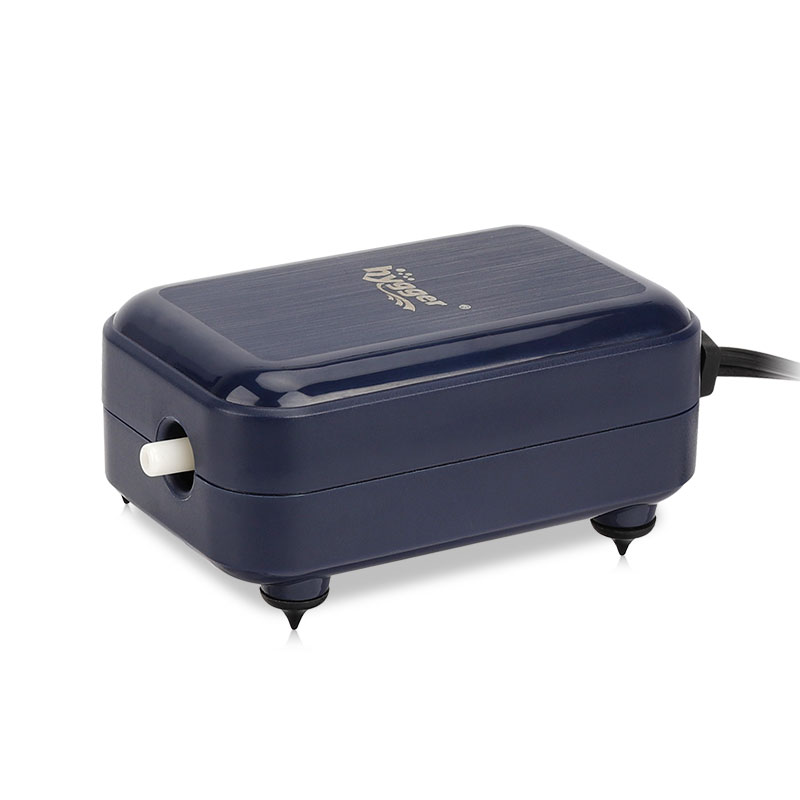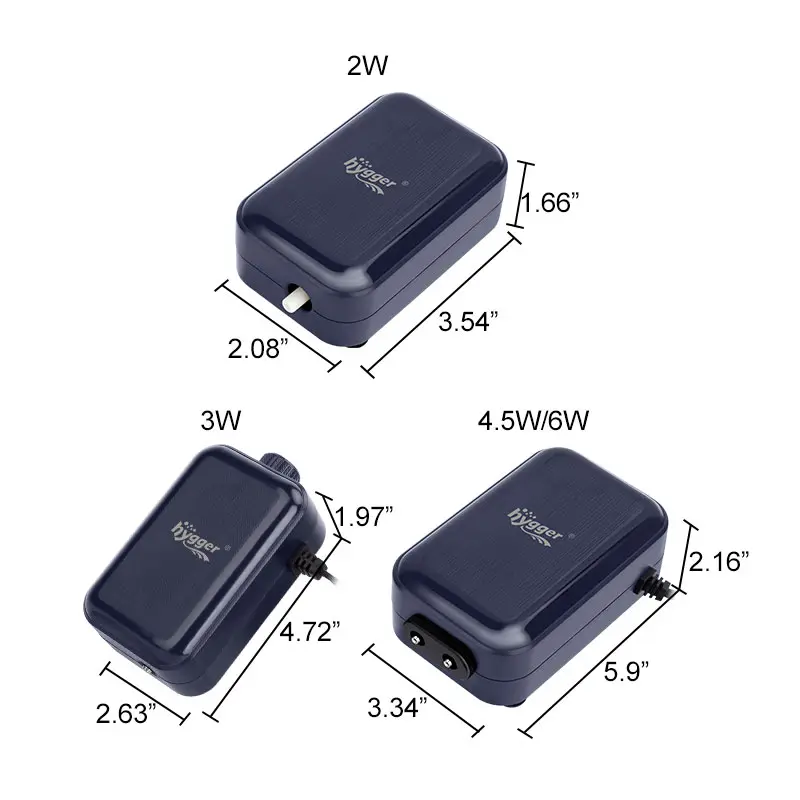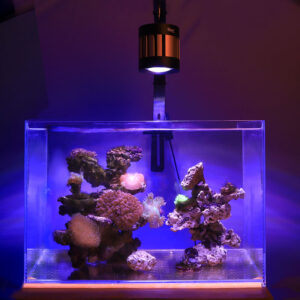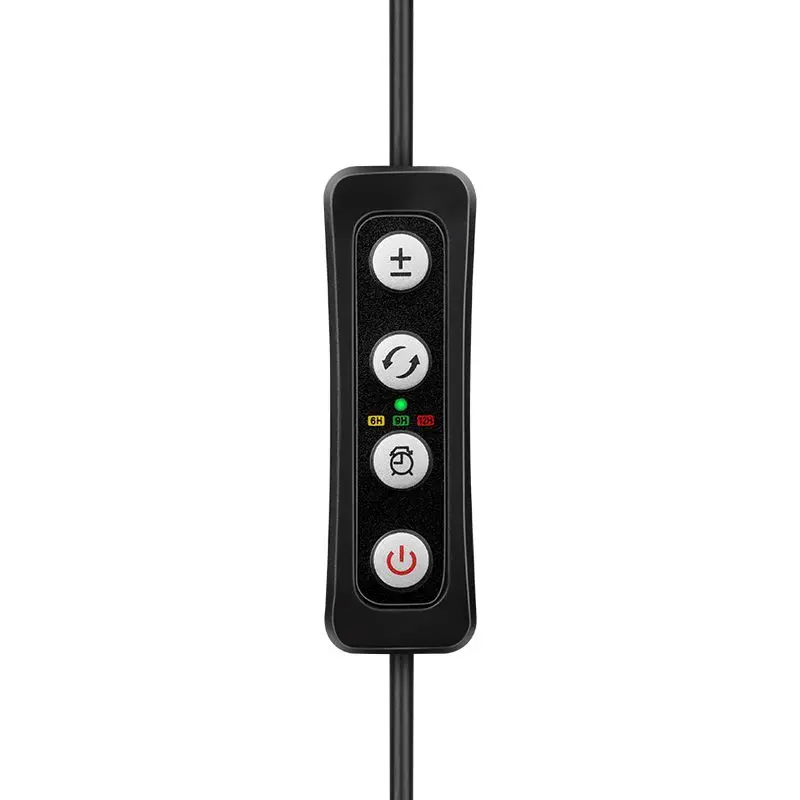How to Own a Floating Coral Reef Tank
Floating coral reef tanks are trending these days. The illusion of floating makes it visually appealing. Apart from the visual perspective, these floating coral carries several other benefits. There are different types and scape styles for it. If you want to build floating coral, follow a procedure with specific tools. All of this and suitable coral types are part of this article.
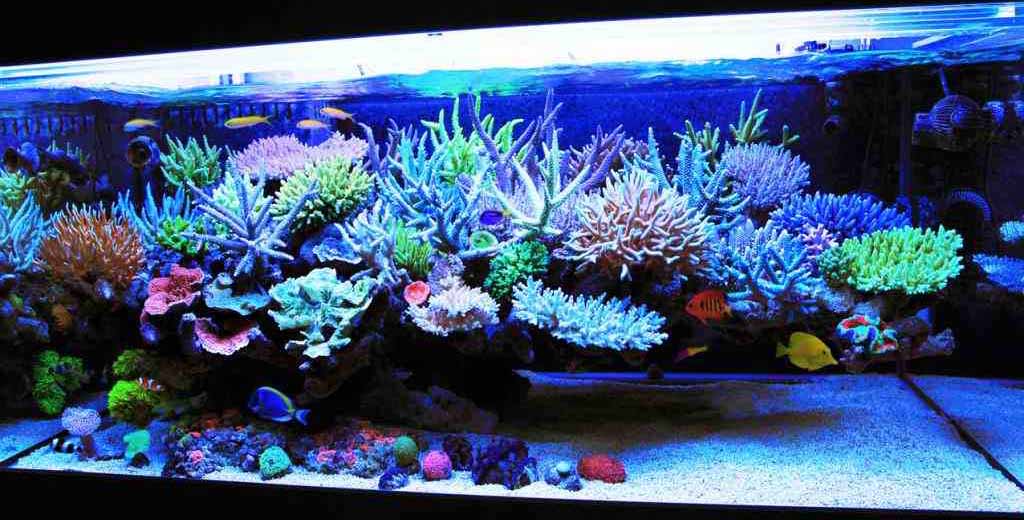
Floating Reef Scapes
Floating reef scapes are a modern concept to establish a reef tank. They have two types and multiple scape styles. All of these things are here.
Benefits
There are several benefits that you can enjoy by having floating coral reef tanks.
Improve Aesthetics
Floating coral reefs enhance the aesthetics of any space and fetch viewer attention. In short, it’s one of the best ways to create a focal point in any space.
Hiding Spot
These floating coral reefs are a good hiding place for small fish. They can save themselves from being preyed on.
Food Source
These floating coral reefs are a food source for many fish, fry, larvae, and other creatures.
Biodiversity
They promote biodiversity in the tank with balance. Many creatures have a symbiotic relationship with corals.
Promote Creativity
It helps to promote creativity in terms of scaping. You can create multiple scape styles with different plant selections and object arrangements.
Space Optimization
It optimizes space utilization in the tank. It uses less space as compared to static designs. This space optimization promotes the free moment of fish and other creatures.
Less Maintenance
It requires less maintenance to provide proper calcium dose and cleaning in the tank.
Optimize Water Quality
Floating reefs promote water exchange with the surroundings. It results in water parameter optimization, i.e., pH, DO, temperature, etc. It also reduces the big chuck of filtration, i.e., chemical and biological.
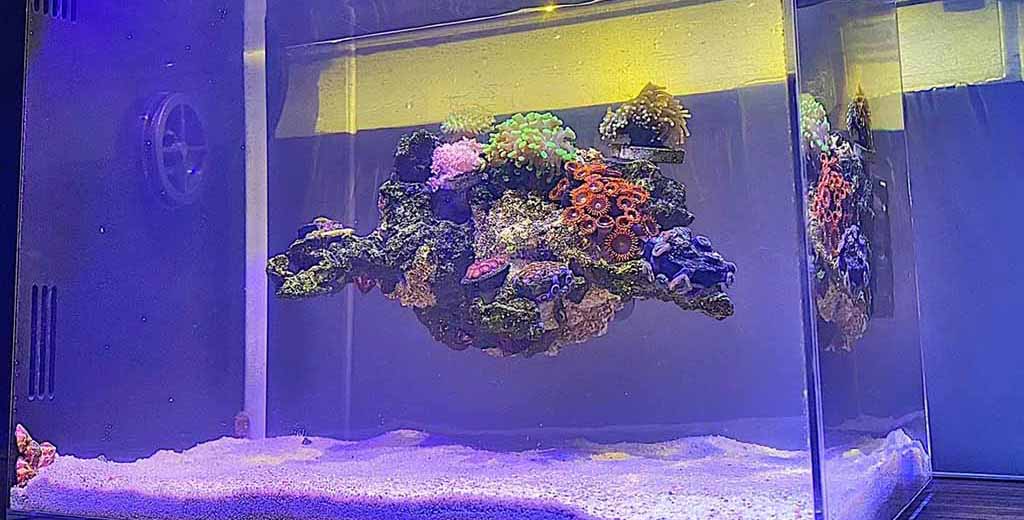
Types of Floating Reef Tanks
There are two main types of floating reef tanks. Here is a brief overview of each type.
Modular Floating Reef Tank
Several floating modules are installed. They make a large floating byount stage. These modules allow flexibility in designing different scaping styles. Moreover, it’ll also make it easier to take care of the system.
Buoyant Floating Reef Tank
It is a single-raised structure in the tank. The styles are usually. It allows you to study the relation of different live coral objects for a long time.
Scape Styles for Floating Reef Tank
Different scaping styles impact the space where a tank is present. Besides the impact on surroundings, the scaping style affects other companions and the tank’s maintenance. Here are some common floating reefscape styles.
Single Arch
| In this style, a single archway is built. Rock and other coral materials are used for it. This style makes the tank a focal point in any space. It is also a shelter for aqua pets. | 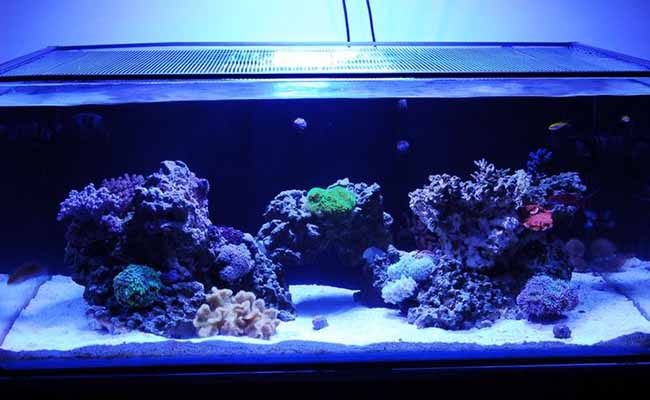 |
Dual Trenches
| Two parallel trenches are dug in the substrate, and the plants are grown on the ridges of the trenches. This sense of depth and height creates an illusion of floating plants. | 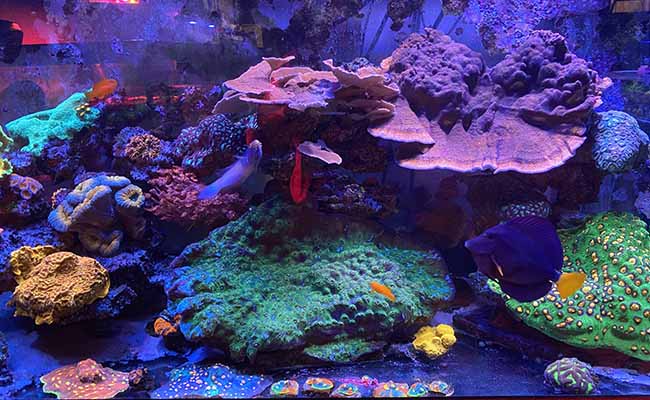 |
Three Islands
| In this scape style, three elevated mounds are built with hammer or frogspawn corals. This style mimics the bonsai appearance. Moreover, this style also provides ample moment space for other aqua pets in the tank. | 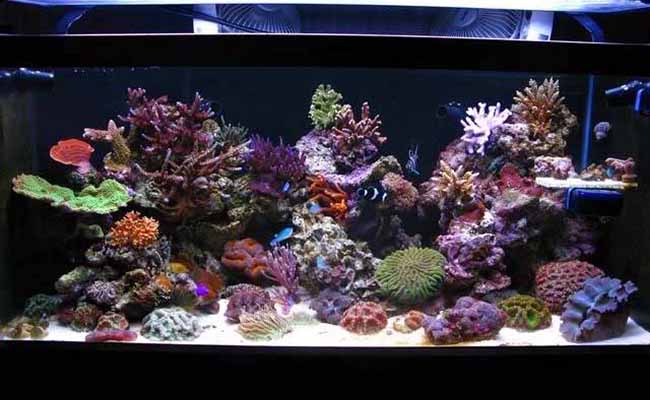 |
Split Reef Column
| A large coral structure stands against the back wall of the tank. It creates a sense of splitting the reef column as it emerges from the back wall. It creates an astonishing backdrop. Moreover, it promotes the natural appearance of the tank. | 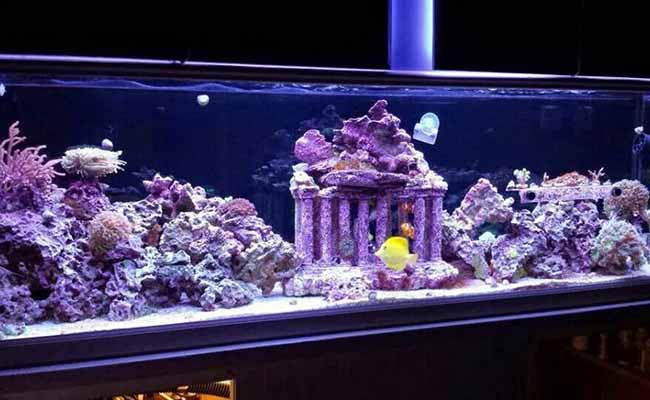 |
Floating Aquascaping Tools
There are several tools required for building a floating reef tank. Some of the following are exclusive to the floating reef tank, while others are general.
| Byont structure | Epoxy, silicon adhesive, magnetic frag rack, etc | Maintenance tools, i.e., algae scraper, water testing kits | Filtration system | Water circulation equipment, i.e., circulation pump |
| Heating system | Lighting system | Timer | Scaping material | Aquarium tank |
Steps to Build a Floating Coral Reef Tank
After gathering the necessary equipment and tools, the next step is to execute the plan. Here is a step-by-step guide to doing so.
Design a Layout
Design the layout on a page according to the available space in the tank. While designing, consider the buoyancy and stability. Moreover, also remember the aquascape type and style.
Byont Structure Construction
Cut the selected material, i.e., plastic, glass, fiberglass, or foam. While cutting, don’t forget to make holes in the bottom, as these holes provide shelter and an approach to food to fish at the buoyant structure.
After cutting, join all the materials to build the structure. While constructing the structure, use such adhesive that matches with the material, i.e., use magnetic adhesive in case of magnetic material.
Installation of Filtration System
Select an appropriate filtration system that meets the needs of your tank. While selecting, remember several points that you can learn from choosing the filter size for your tank.
Populating the Tank
It’s time to populate the tank with substrate and other objects. Install a layer of sand and gravel substrate at the bottom. Then, lay a layer of nutrient-rich substrate over it. After that, install all scaping materials, i.e., live rocks, rocks, caves, etc.
Installation of Plant to Buoyant Structure
Select the suitable plants and coral frags for your tank. Grow these plants and attach coral frags at the top of the buoyant structure with some suitable material. You can use epoxy, rubber bands, magnetic materials, etc.
Install Instruments
Install the saltwater lighting that meets the necessities of corals and aquatic life. Also, install a heating and, if required, cooling system in the tank. Water pumps and other instruments should also be installed at this stage.
Cycle the Tank
Leave the tank for a few days and wait for water clearance. Several things happened in the new tank cycle, like ammonia spikes. Therefore, you need biological and mechanical filtration a lot. After some time, things become normal.
Introduce Aqua Pets
Once the tank becomes stable, it’s time to populate the tank with fish and other aqua pets. After filling the tank, observe the fish and other aqua pet behavior. In case of any discomfort, try to solve it at the beginning.
Maintenance Routine
After that, you need to do routine maintenance for the reef tank. It spans daily, bi-weekly, weekly, bi-monthly, and monthly.
Choose Corals for the Floating Reef Tank
According to the hardness of the structure, corals are classified into different groups, i.e., soft corals, LPS, and SPS corals. Here are some aesthetically appealing and easy-to-design corals.
Soft Corals
Zoanthids and Palythoa
| They are among the best choices, available in various colors and patterns. They are easy to grow in clusters. It also provides the flexibility to fill the space. | 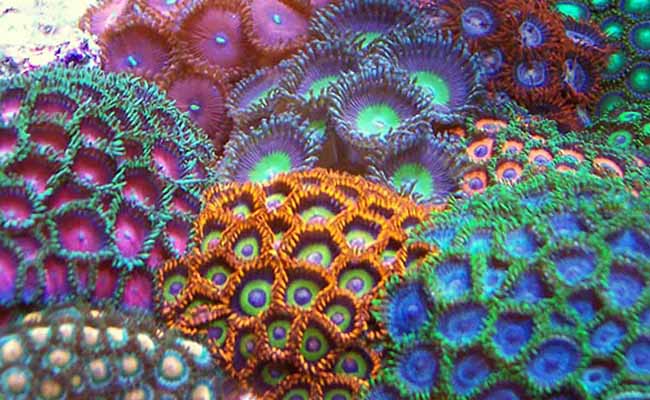 |
Xenia
| Xenia is famous for pulsing the water away with their hand. This moment adds a visually appealing sight to any tank. They have multiple shades, i.e., green, brown, and pink. You can grow on the edge of the rock and create a sense of life in the tank. | 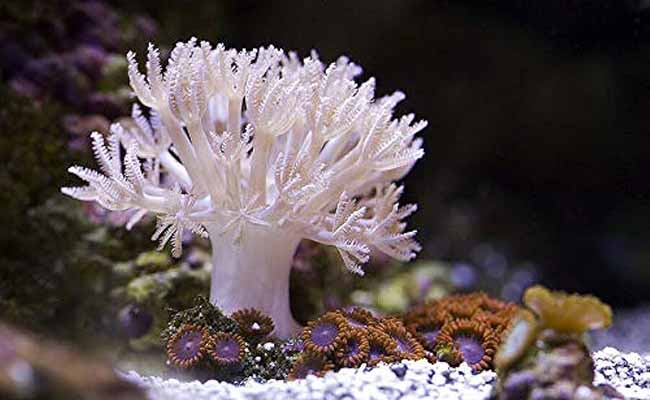 |
LPS Corals
Hammer Coral
| This is an LPS coral choice for your floating reef tank. It’s native to Pacific reefs. Its distinctive shape and color, i.e., green, brown, and gold, make it famous among hobbyists. These corals act as focal points and add a height factor to the tank. | 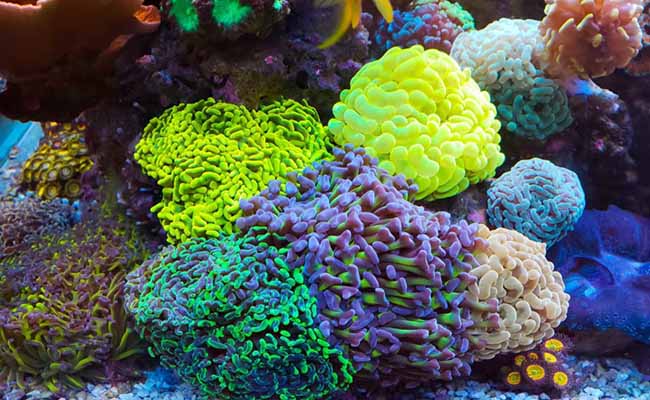 |
Candy Cane Coral
| It gets its name from its shape. The light strips around the center of the polpy give it the shape of peppermint. They are hardy, fast-growing, and can tolerate alkalinity up to some extent. It comes in various colors, i.e., green, purple, and teal. They are used to create a peaceful temperament in the tank. | 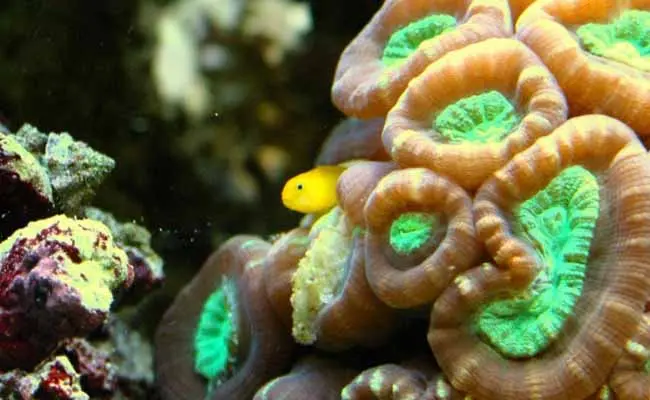 |
SPS Corals
Bird’s Nest Coral
| These Indo-Pacific native corals are another choice for floating reef tanks. These finger corals come in various colors, i.e., green, purple, and pink. They add texture and depth to the tank. They are among the best choices to give your tank a wild reef shape. | 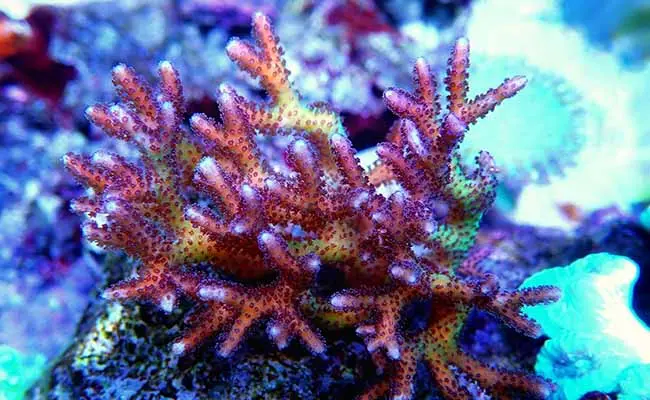 |
Staghorn Coral
| These common tropical corals are highly adaptable in structure and color as well. They take it both according to their surroundings. It shows tabular growth and has various colors, i.e., blue, purple, and green. It’s great for creating different scape styles, i.e., single arch, three islands, three pillars, etc. | 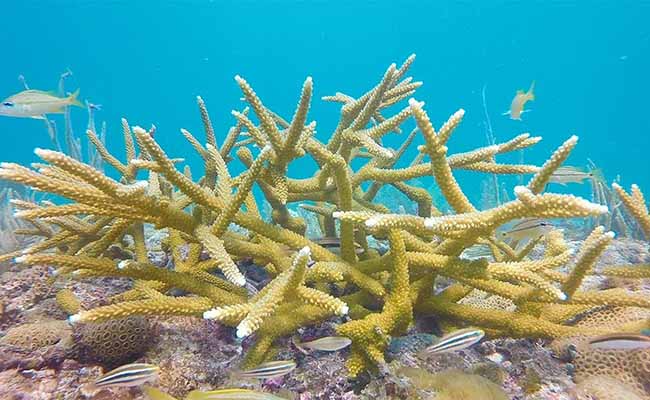 |
Key Takeaways
- Floating coral reefs carry numerous benefits, like aesthetic enhancement, food source, bio-diversity, space optimization, etc.
- There are two main types, i.e., modular and single-raised Buoyant floating reef tanks.
- Multiple scape styles can be achieved within this arrangement, i.e., single arch, dual trench, etc.
- Building a buyout reef tank requires some special, i.e., bonding material, specialized coral, etc., and other general tools.
- Follow a step-by-step procedure from designing to maintenance routine for the reef tanks.
- All three types of corals, i.e., soft, LPS, and SPS, are suitable to build a floating reef tank. They improve the aesthetics and convenient to design a floating reef tank.

